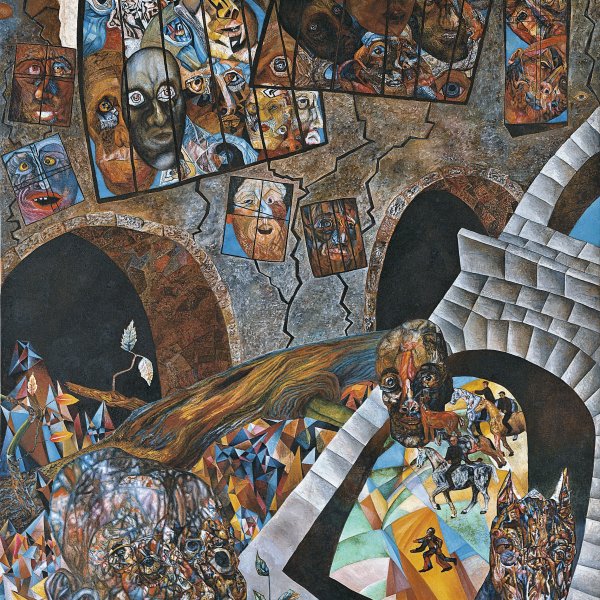Tatiana Glebova
Saint Petersburg, 1900-1985
The Russian painter Tatiana Glebova attended the Saint Petersburg Academy of Art from 1924 to 1927. Although she was taught by Alexander Savinov, at this early stage in her career she came into contact with Pavel Filonov, who ran a workshop within the academy and became her principal artistic reference from then onwards. When Filonov established the Masters of Analytical Art group in 1925, Glebova became one of its most loyal disciples and was so faithful in her attempts to put its artistic principles into practice that many of her works were attributed to her master for decades. In addition to certain elements derived from the Russian Cubo-Futurist movement, they evidence a clear interest in Neo-Primitivism and Central European Renaissance painters such as Cranach, Bosch and Dürer. They are also tinged with the apocalyptic mood found in the work of contemporary German artists like George Grosz and Otto Dix, who were very well known in Russia in the early 1920s.
Glebova took part in the exhibitions of Masters of Analytical Art and, like the rest of its members, contributed to numerous children’s publications as an illustrator. From the early 1930s she designed theatre and ballet stage scenery, such as for the staging of Wagner’s opera Mastersingers of Nuremberg in Leningrad during 1932.
Although the group Filonov led split up in 1932, Glebova remained affiliated with her master. Nevertheless, influenced by her husband Vladimir Sterligov, also an artist, she began to appreciate the work of Malevich and Matiushin and gradually shifted away from the Expressionist style which had characterised her earlier period.
During the Second World War Glebova was evacuated to Alma-Ata (now Almaty, Kazakhstan), where she exhibited her work and designed the costumes for the film Zhambul (1943). A solo exhibition of her work was held in Leningrad in 1949.
Glebova took part in the exhibitions of Masters of Analytical Art and, like the rest of its members, contributed to numerous children’s publications as an illustrator. From the early 1930s she designed theatre and ballet stage scenery, such as for the staging of Wagner’s opera Mastersingers of Nuremberg in Leningrad during 1932.
Although the group Filonov led split up in 1932, Glebova remained affiliated with her master. Nevertheless, influenced by her husband Vladimir Sterligov, also an artist, she began to appreciate the work of Malevich and Matiushin and gradually shifted away from the Expressionist style which had characterised her earlier period.
During the Second World War Glebova was evacuated to Alma-Ata (now Almaty, Kazakhstan), where she exhibited her work and designed the costumes for the film Zhambul (1943). A solo exhibition of her work was held in Leningrad in 1949.





